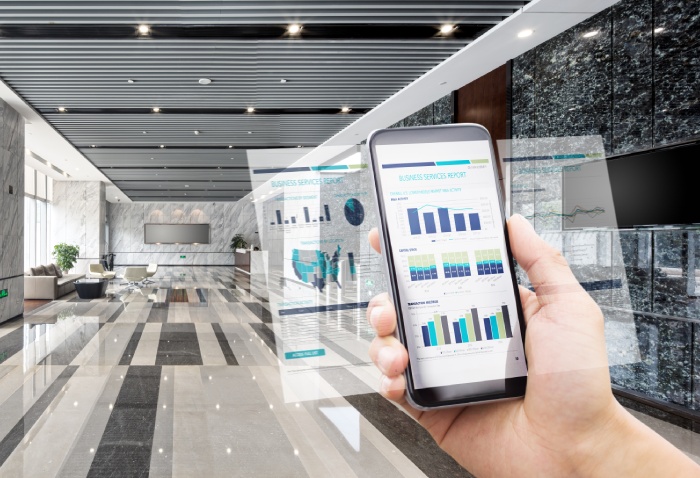Automated Accounting Software: 7 Options (With User Commentary)
on 8 August 2023
Will bookkeeping be automated? It’s a question many accountants have asked for some time. The entrance of automated accounting software in the market answered this question years ago: a resounding yes.
Granted, not every part of bookkeeping and the broader accounting sphere has gone the way of automation—there are plenty of higher-level tasks that still require judgement and expert assessment. But tools in the automation space have significantly reduced the manual nature of more mundane accounting work.
From saving time to aiding in compliance, automated accounting has produced a number of benefits. But what exactly is automated accounting, and what kind of software fits into this space? Keep reading to learn the answers.
Breaking Down Automated Accounting
What is automated accounting?
Automated accounting, or accounting automation, is the practice of using technology to automate tasks and processes that accountants typically handle manually. Tasks that may be large time-suckers—such as requesting (and re-requesting) files from clients and keeping track of what you’ve received—can be addressed easily with the right software solution.
What does automated accounting software need to be considered valuable?
All accounting automation solutions aren’t built equally. Depending on their feature set, some may work for you, and some won’t be a good fit. Regardless, any worthwhile solution will have:
- A low learning curve. The last thing you want in any automation tool is for it to be difficult to use. Automation is supposed to make work easier, not harder. Usability should be designed into the solution so that new users can quickly grasp how to accomplish their desired accounting tasks without lots of training—whether the users are your staff or clients.
- Great reviews. What better way to tell how good a tool is than looking at reviews from current and past users? Be sure to check third-party review sites to see unbiased perspectives. Collectively, the experiences of multiple users can help identify whether an automated accounting system lives up to its claims and, if it falls short, where. You can use these comments to inform your choice of solution.
- Collaborative capabilities. Whether it’s working with colleagues on client accounts or interacting with clients themselves, your automated accounting software should enable and support collaboration.
What accounting tasks can you automate with software?
With automation in accounting finance and auditing, plenty of tools are available to simplify and enhance accounting tasks like these:
- Client document requests
- Payroll
- Expense reporting
- Invoice processing
- Tax preparation
- Cash flow forecasting
7 Automated Accounting Software Solutions To Try
1. QuickBooks Online
QuickBooks Online is an accounting software tool used mainly by small and medium-sized businesses to accept business payments, manage and pay bills, and perform payroll functions.
Jae Jun, founder of The Crown Choice, uses QuickBooks for his company’s accounting needs. “Its rule-based logic helps us easily assign transactions into the correct category. For recurring and common transactions, the rule-based automation has eliminated 80% of the work we would normally do with manual reconciling.”
Capterra rating: 4.3 (4,500+ reviews)
2. Gusto
Gusto is an HR platform that provides businesses with a single system of record, compensation tools, payroll functionality, and more.
Jun also uses Gusto in his business to manage payroll and related HR matters. “These operational aspects can be time-consuming and expensive. We used to spend several hundred dollars per month to keep up with processing and filing payments. Now, we’ve automated these tasks with Gusto, which means we save money and can focus more on growing the business.”
Capterra rating: 4.7 (3,100+ reviews)
3. Expensify
Expensify is an expense management system that handles receipt scanning, reimbursements, bill payment, and more.
Gerrid Smith, CMO of Joy Organics, says the app’s receipt scanning feature makes it easy to record important data, which can then be uploaded in a “user-friendly manner directly into accounting software programs, allowing for fast reconciliation. It also allows for automatic expense coding and the generation of real-time expense reports.”
“We were wasting time and resources going through receipts and invoices before turning to this automated accounting software,” says Smith. “Even though these jobs take a long time, they don't necessitate a lot of competent human input. By automating these areas, we've since been able to focus our attention on more complex accounting activities and provide outstanding service to our clients.”
Capterra rating: 4.4 (800+ reviews)
4. Glasscubes
Glasscubes is a client portal and collaboration solution that enables clients to seamlessly work with team members and clients alike.
“Using Glasscubes has been helpful, especially post Covid when people have had to work from home with little interaction,” says Eness Mutsvangwa-Sam in a Trustpilot review. “With Glasscubes, it’s as if people are occupying the same office. It makes it easier to collaborate and review and share ideas on different documents.”
Capterra rating: 4.6 (200+ reviews)
5. Fathom
Fathom is reporting, analysis, and forecasting software that integrates with leading accounting platforms.
“Automated technologies can assist your accounting firm to acquire a better understanding of its financial performance and provide clients with value-added reporting services,” says Rameez Usmani, tech and security expert at Code Signing Store. “Fathom, for example, assists firms in examining profitability, cash flow, and growth, as well as other important performance indicators, so they can make better decisions.”
Capterra rating: 4.8 (6 reviews)
6. GoCardless
GoCardless is a solution focused on making it simple to collect recurring and one-off payments.
Nicholas Rubright, founder of Ranko Media, says if you want to ensure your clients pay you on time, automation is key. “Online payment platforms like GoCardless can be used to collect regular direct debit payments from clients, cutting down on staff time spent on debt collection and boosting your cash flow. We've automated the collecting of clients' recurring payments, and operations are better because of it.”
Capterra rating: 4.0 (24 reviews)
7. Xero
Xero is online accounting software that connects you to your bank, accountant, bookkeeper, and other business apps.
Emily Johnson, head of LiveWire Leads, says Xero is her go-to solution, primarily because she works with small to medium-sized businesses, which Xero caters to. She praises the platform for its bookkeeping, payroll management, invoicing, and live bank feed. “Plus, firms and solo professionals can easily study the financial position of their business using Xero's exceptional dashboard display.”
Capterra rating: 4.3 (2,000+)
How To Integrate Automated Accounting Software Into Your Business: 5 Steps
Finding the right solution isn’t the end of your accounting automation journey. You also need to rethink your business processes to include the use of your chosen solution.
Robert Thorpe, CFO and co-founder of HiStylePicks, integrated automated accounting software at his business; below is a breakdown of the steps he took. Consider following them when integrating this type of software into your own organisational processes.
1. Research the solution’s features and functionality.
Thorpe says his team integrated accounting software into their business processes and daily workflow by following a systematic approach. First up was conducting “thorough research to understand the software's features and functionality. This allowed us to identify the specific modules and tools that would be most beneficial for our accounting needs.”
2. Collaborate with your team to create a well-considered implementation plan.
Everyone’s input is valuable when it comes to changing up a longstanding process. “We discussed our existing processes and how the solution could be integrated seamlessly into our workflow. This ensured that everyone was on the same page and understood their roles and responsibilities throughout the integration process,” says Thorpe.
3. Customise the solution to suit organisational needs.
“One of the key steps to integrating our new accounting solution was customisation,” says Thorpe. The solution offered a range of modules and features that could be tailored to their specific requirements. “We took advantage of this flexibility and customised the software to match our unique business processes. This included configuring the chart of accounts, setting up automatic bank reconciliation, and creating custom reports.”
4. Train your team on using the solution.
Thorpe says training and support were also crucial in ensuring a smooth integration. He organised training sessions for the team to familiarise them with the software's interface and different capabilities. “Additionally, I made sure to provide ongoing support and troubleshooting assistance to address any questions or challenges that arose during the transition period.”
5. Monitor and optimise processes.
Lastly, Thorpe says he has continuously evaluated and optimised his team’s processes to maximise the benefits of using their chosen solution as business needs evolve and as the solution is upgraded with new features.
Choose Automated Accounting Software That Keeps You Connected With Your Greatest Asset: Clients
One of the most pertinent automation tools your accounting firm can take advantage of is a client portal. Glasscubes is one such tool—it streamlines collaboration internally and externally, organises and prioritises workloads, and automates the mundane administrative activities that accountants deal with day-to-day.
Consider a few areas you can automate with Glasscubes:
- Approvals. Do you need approvals for client files, employee expense reports, or other key documents? You can build an approval workflow in Glasscubes and loop in as many people as you need for approval. The workflow moves information to the next responsible party as soon as the current one signs off.
- Payroll. Instead of emailing back and forth with your client, use an information workflow to create a more seamless payroll process. Create a form, have clients complete and submit it, and then watch the form be routed to various parties for task handling and approval according to your directions.
- Audits. When performing an audit, you often need tons of information from clients. Document requests can easily reach into the hundreds. Instead of hunting down and tracking receipt of each file, automate it with a file request. Clients receive an email that links to a file upload area—and if they don’t respond in a timely manner, they automatically receive reminders.
In addition, our solution helps everyone stay in the loop on the latest updates and share what’s most important—all while keeping work moving efficiently. Use threaded discussions to keep conversations in context, whether discussions deal with client tasks or important project files. Plus, secure file sharing and task management ensure your accountants, auditors, and clients stay on the same page.
Keeping Your Data Secure
Dealing with sensitive financial data requires a robust security approach for every solution you implement. At Glasscubes, once data reaches our servers, it is immediately synchronised and distributed across a minimum of three different physical locations within the UK. In addition, access to our client portal software uses the highest level of SSL encryption to ensure the transfer of your data is secure between you and our servers. Further, we encrypt all data at rest for ultimate peace of mind.
Beyond providing a secure infrastructure, Glasscubes also enables you to assign varying levels of access to each client’s portal so that different user roles (e.g., partner, relationship manager, administrator, etc.) can access data relevant to those roles. You can even restrict access to individual files and folders.
If you’d like a demonstration or want to see how other accountancies are using Glasscubes, learn more here.


